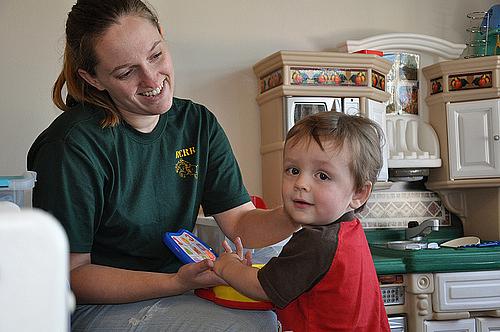Children and Health Care Reform

By this time next year, Americans will be living with the most comprehensive overhaul of the U.S. safety net in generations. When it takes effect in 2014, the federal health care law known as the Affordable Care Act will have established national standards for health insurance benefits and guaranteed medical coverage for millions of previously uninsured Americans.
The ACA is all-encompassing legislation, with far-reaching effects. For my 2012 National Health Journalism Fellowship reporting project, I mapped out a series of radio reports for KQED’s statewide newsmagazine, “The California Report,” which airs on more than four dozen public stations throughout California and southern Oregon. With support from the Lucile Packard Foundation for Children’s Health Journalism Fund, I focused on two narrow aspects of the law, through the lens of one population of health care consumers: children.
When it comes to health care, children are not just little adults; they require pediatric specialists, a different schedule of screenings and diagnoses, and much more preventive care than adults. The ACA outlines 10 categories of care, dubbed “essential health benefits,” (EHB) that all insurance policies would be required to cover. Doctor visits, emergency care, mental health services – these are just a few of the essential benefits all policies would have to provide.
In their rollout of the ACA, states had to choose an existing insurance plan offered in the state as their benchmark for essential services. California’s EHB plan is modeled on a Kaiser small group plan for employees (i.e., adults). That concerned children’s advocates, who argued that one-size-fits-all medical insurance would short-change kids. For my first piece, I wanted to find out whether the essential health benefits plan chosen by lawmakers in California would be adequate for children. What I discovered was a mixed bag: the new insurance minimums would serve children well in some areas, but not all.
My second story focused on a more obscure category of care: habilitation. Most people understand what rehabilitation is; for example, physical therapy to help stroke patients learn to walk again. But habilitation is different; it’s the array of services and devices that help patients – most often, children – develop skills. It might be speech therapy for a child with Down syndrome or behavioral analysis for a child with autism. Habilitation is also vital to children who have disabilities or chronic conditions such as asthma or diabetes; it helps them thrive. I wanted to see how broadly this important category of care would be interpreted under the ACA. Again, the answers were unclear.
Here’s what I learned reporting these complicated stories:
- Getting out in front of a story means accepting uncertainties. This turned out to be my biggest challenge. Since ACA is still in the rule-making phase, regulations and definitions are still evolving, making it nearly impossible to get a straight answer to what I thought were simple questions. I wanted to know whether low-cost policies offered through California’s health exchange would provide children with the same “gold standard” of care that is currently included in MediCal. Or, whether the definition of “habilitation” was broad enough to cover the range of not-strictly-medical-yet-crucial services that kids with a chronic condition need, such as inhalation therapy for kids with asthma or educational diabetes camp for kids with Type 1 diabetes. Sources from state lawmakers to insurance companies and children’s advocates disagreed; either they had fundamentally different answers – or they threw up their hands, saying, “Nobody really knows.”
- Complex legislation can be a heavy lift for public radio. My early story discussions with my editor were discouraging: “too dense,” “too wonky,” “you’ve lost me,” she said. My challenge was to discard every bit of non-essential detail and pare down to the heart of the story, without glossing over the complexity of the legislation or the concerns of its various stakeholders. It was tough; my radio script went through countless drafts before the language flowed and a listener could follow the intricacies of the law. I partnered with the health care blogger at KQED, Lisa Alifiris, so that an online version of my story could include more explanation and details and links to further resources. And I recognized early on that I had to humanize the story, which presented its own set of challenges.
- HIPAA can be a B#&!@. The Health Insurance Portability and Accountability Act of 1996 is a federal law designed to protect patients’ health information. It protects their privacy and their right to access their own records. The law also requires special permissions and consents for third parties (especially reporters with tape recorders) to be anywhere near patients receiving medical care. It took months and many requests to find “real people” who fit the profile I was looking for at facilities willing to have me sit in and record a patient exam. I couldn’t even record “ambi” (background sound) in a waiting room for a hospital ER -- even though no patients would be identified – without lengthy email exchanges and many levels of clearances. So, start early and know it’s often a challenge to humanize health care stories.
- Some stories cry out for a follow-up. Implementation of federal health care reform will be momentous for consumers, and a long hard slog for regulators, insurers and providers. It will take months or years to iron out the details and confront the inevitable problems that arise. I have identified several areas critical to children’s health care that need clarification going forward. Children’s advocates will be paying attention; I’ll also be curious to check back a year from now to see how these two stories shake out.
Photo Credit: Kris Gonzalez via Flickr

